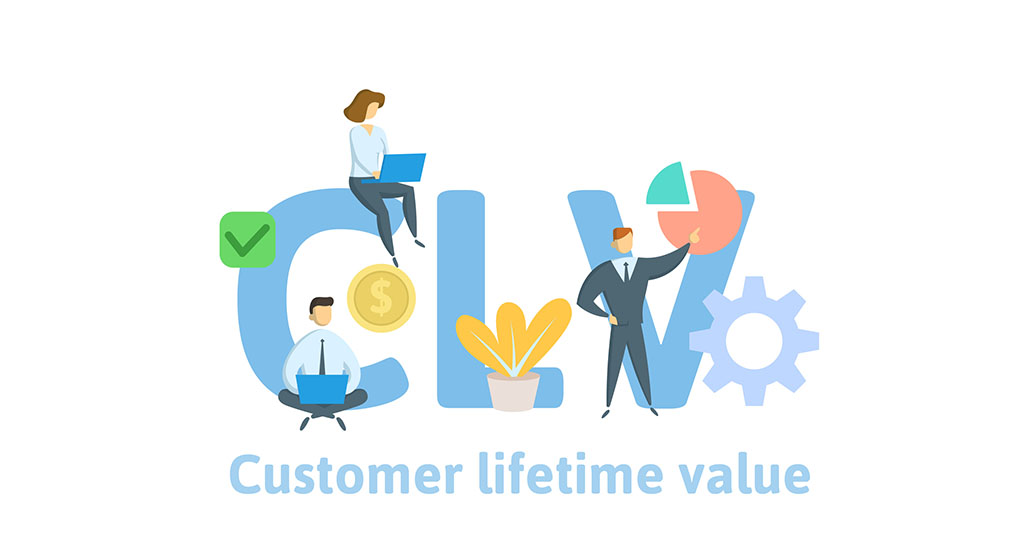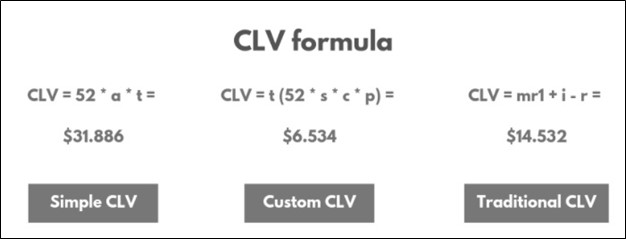
Your VP just asked you to create a monthly report and dashboard that includes this key business metric: Customer Lifetime Value (CLV). A quick Google search uncovers some straightforward formulas (simple and historical CLV) that you can use to calculate it. Done!
Not so fast.
A simple CLV formula looks at how much a customer spends minus how much it costs to acquire and serve that customer. This calculation doesn’t take into account lot of different factors, though, such as profit margin and discount rate. It assumes that all data inputs are the same for every customer and remain consistent over time.
A historical CLV formula looks at all historical purchases and gross profit, then essentially guesses what that final lifetime value number will be. That’s because it relies solely on historical data — if that data even exists and is accurate and reliable.
Don’t get me wrong. Using a simple or historical CLV calculation across your entire customer base can be a useful metric. A lot of companies do. I’ve used it myself in the past.
If you want to look at CLV from a forecasting perspective, however — and you should, as the whole point of determining CLV is to predict future revenue — treating all customers alike (simple CLV) or only including historical data (historical CLV) simply cannot get you there.
That’s because when Sales and Marketing use these basic, catch-all calculations, they tend to lump all of their customers together. Doing so doesn’t take into account that businesses are complex and their customer base is varied, especially if an organization offers a lot of products or services (and regardless of whether they’re B2B or B2C).
Customers who purchase Product A often look a lot different than customers who purchase Product B, even if they’re in the same industry (but especially if they aren’t). They may spend more (or less), and they may purchase more (or less) frequently than the other segment. The more products or services a company offers, and the more industries they offer them in, the more complex it gets.
The better approach
I’ve spent the majority of my career in sales and sales management, and one of my biggest responsibilities has been around understanding — and increasing — CLV.
I’ve found the ideal approach to be predictive CLV, which provides a more reliable measure of what your customers will spend with you during the course of your business relationship. And in order to calculate it, you have to go back to the basics: customer segmentation.
Why? Because each buyer persona is unique in terms of how they buy (their customer journey) and how much they spend (revenue). They also have different cross-sell and upsell opportunities (future revenue), different renewal and discount rates, and different warning signs of potential attrition that, if you know what they are, you can counter with targeted marketing campaigns.
This approach requires factoring customer segmentation, which reflects a specific buyer persona and customer journey, into your calculation. Segmenting your customers and using a predictive CLV calculation, and then rolling up those individual results into an overall CLV, will provide a much more accurate forecast. It will also help you more thoughtfully shape your future sales and marketing efforts, which will improve and sustain the health of your business over time.
Break your segments into segments
After this initial segmentation by buyer persona and customer journey, both initially and throughout their lifetime as a customer with your organization, it’s time to dig deeper.
Yes, it’s time to segment your segments. Specifically, I’ve found RFM segmentation to be a very valuable way to further segment your customer base when calculating CLV:
R: Recency (how recent was the last order?)
F: Frequency (how often does this customer make a purchase?)
M: Monetary Value (what is this customer’s total revenue?)
These three criteria provide valuable data for both B2B and B2C marketers to work with, and can be broken down even further if your organization works with trading partners, resellers, or distributors across multiple markets, regions, and even continents. Some organizations even go so far as to define their own custom CLV model that includes factors specific to their business that may impact a customer’s future value.
For example, take a look at these sample calculations for simple, custom, and historical (traditional) CLV for the average Starbucks customer:

Source: Omniconvert
As you can see, three different formulas (simple, custom, traditional) applied to the same pool of data end up producing significantly different results. This can cause substantial challenges if you need precise forecasting data, whether for planning purposes or because you’re a public company. In the example above, custom CLV appears to provide a value closer to the true CLV. (I won’t get into the definitions of each of the different variables, but you can find more detail here.)
Sure, a predictive CLV is a more complicated formula. Using simple or historical models for calculating CLV, however, are not going to provide you — or the executive team — with the most accurate forecasting data. And the whole point of calculating Customer Lifetime Value is to predict how much a certain customer segment will spend overall.
There are number of different predictive CLV formulas out there, but the variables may be unique to your organization based on the segmentation you’ve come up with. You can go as deep as you want. Just don’t lump all of your customers into one basket to calculate CLV because that number won’t provide a true representation.
Use your marketing powers to predict the future
Customer segmentation is an often-overlooked variable in the way organizations approach CLV. Unless you already have a mature segmentation of your customer data, calculating it may require an initial, upfront investment (in people, dollars, and processes). It can provide, however, a more accurate and holistic picture of what the future holds for each of your customer segments and your business as a whole.
It also shows Sales and Marketing where to prioritize and focus their dollars, resources, and attention. Just remember: the ability to rely on any of these calculations depends on several factors, but none more so than data integrity.
If you need some assistance with developing your buyer personas, mapping your customer journeys, building out your customer segments, or cleaning up your data, we offer a variety of services that can get you where you need to be. Let us know how we can help!

As a Client Engagement Manager, Trevor Harp helps BDO Digital clients meet their strategic objectives through the effective use of marketing technology and services. He brings over 20 years of sales, marketing, and client success experience in technology and software across a full spectrum of clients, ranging from startups to Fortune 100 enterprises. His extensive background shapes his daily motivation to create long-term partnerships and success with each and every client.
The post What Marketers often Overlook When Determining Customer Lifetime Value (and Why It Matters) appeared first on DemandGen.























